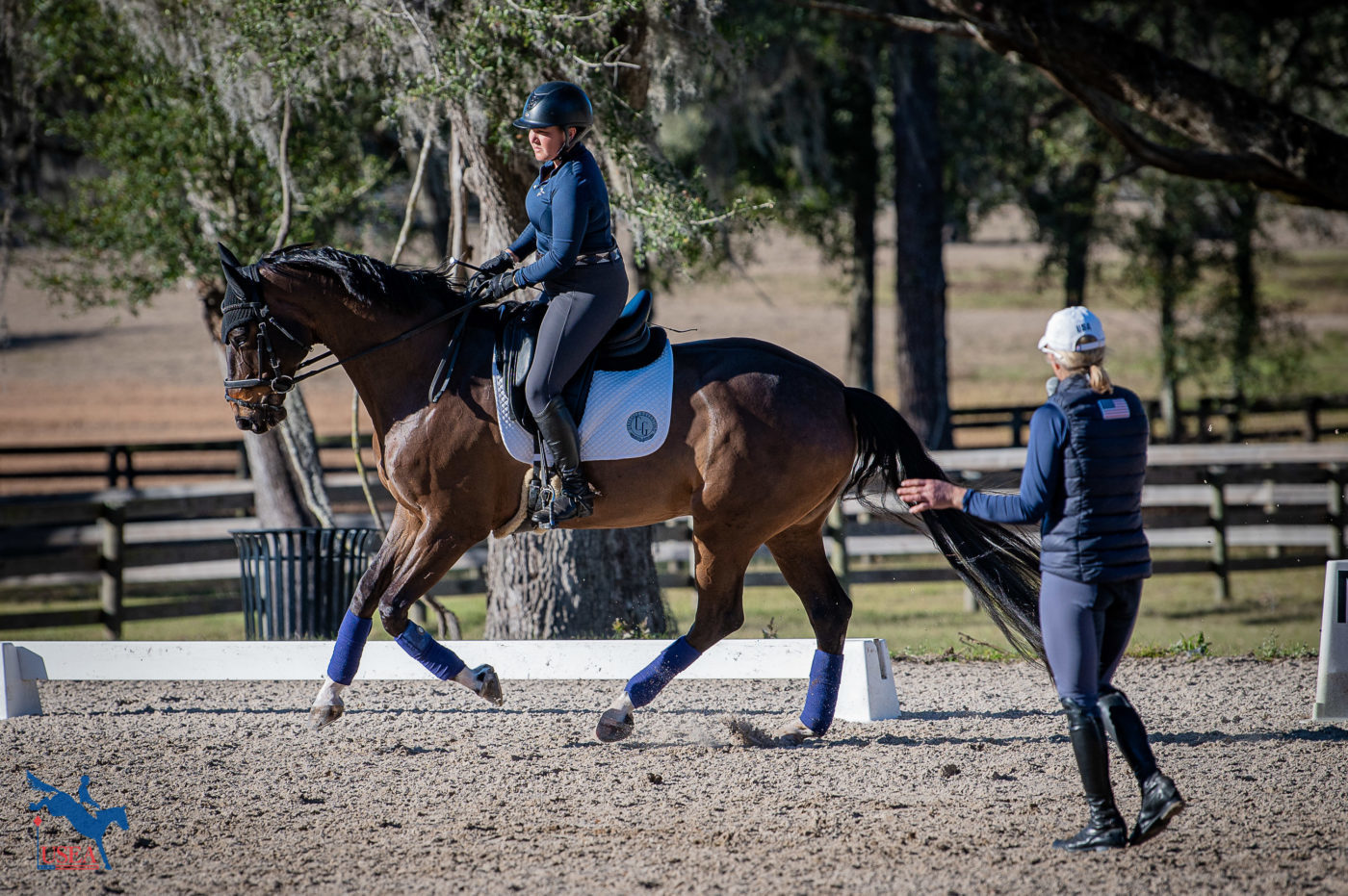Renew Your USEA Membership for the 2023 Season Today LEARN MORE

Spending three months in Florida over the winter is all about bringing the basics back to my riding. Most of my horses have lighter work in November and December, so when they go back in training at the start of the new year, I try to make sure that all of my work is about keeping it simple using flatwork, ground poles, cavaletti, and small jumps and focusing on exercises that reinforce the rider and horse connection. In all three phases of eventing, I feel it’s important to have a way of connecting with your horse that is basic and consistent.
All year long I subscribe to Piggy TV, Piggy March’s online training series. Whether she’s having a lesson with Ian Woodhead, or she’s giving a lesson, or talking about the way a horse is going, she stresses the ability to ride the horse to the contact. As my students and I start the year, we talk about being able to change gears within a gait by riding our horses forward, inside leg to outside rein to a bigger stride, or collecting them by moving the saddle a little to put them back on their hind legs. The goal is to always be connecting them within the same rhythm.
A really nice way to connect your horse with that mindset is as simple as trot rails, 4' to 4 ½' feet apart, or three canter rails on a circle that you can trot or canter, the middle spread being 9', down to 7' on the inside and up to 11' or 12' on the outside.
I’m a fan of using exercises to give you instant feedback on your ability to connect your horse to the rails. Riding to the inside or outside of the rails and not just the middle, lets me practice going bigger and smaller in the same rhythm. You can raise one side of the rails, or you can do them at the walk. Ground poles allow continuous feedback, and the more you practice these simple exercises and basics, the more connected you and your horse will be.
I also use canter rails 10' from a vertical or oxer to regulate the rider’s ability to keep the same canter, rhythm, and connection from inside leg to outside rein. It’s not about the jump, but about having that ability to keep the hind legs quick and still keep them connected to the bit.
I was fortunate enough to ride with Pippa Funnell in January with my three-star horse, Beautiful Storm. My girls and students were chuckling with me because Pippa began with some of the same exercises that I have set up in my field and ring all the time. Using ground poles and cavaletti, Pippa established the rider’s basic connection of leg to rein while maintaining the rhythm. She also stressed the rider using their body to change their horse’s balance.
I think it’s really important to keep practicing these simple ideas, whether I’m on my three-star horse, on my green bean that just came off the track, or I’m teaching students of all abilities. As you go up the levels, the exercises get more sophisticated because you expect your horse to respond quicker, but it’s all the same ideas.
When I school my students or myself cross-country, I keep these concepts in my mind. I start out with a trot and pop over small jumps so I can keep my line of direction, a rhythm that I dictate, and hold my own position. I like to start this way because it keeps everything a little slower in my horse’s head, my head, and my students’ heads.
I trot straight to the jumps riding a rhythm and canter straight away from the jumps. Then from there, I love to practice without jumps, getting in my two-point and galloping, changing my upper body to change my horse’s balance, then connecting into the saddle and making a smaller circle. I can use the circle to slow down or practice staying at the same speed. The point is to have my horse respond to me. I might have to do this several times before I go to cantering jumps, so I’m always aware of having a balanced preparation period with my upper body. I’ve made sure my horse is responding and that I can change my balance by using my body as a sail, as Karen O’Connor would say.
One of the best examples of connecting the rider and horse that I was able to watch this year was Robin Walker teaching Mia Farley at the ECP Symposium. Robin started by having Mia circle and change her body to connect her horse to herself before progressing to the horse connecting to cross-country jumps. Once he made sure her horse was actually listening—it always goes back to our horses listening and being balanced—then her horse was able to understand skinny jumps because she and her horse were connected and in balance. (At some point Practical Horseman will offer this on video, and it is worth watching.)
I would encourage riders to get in the habit of starting with fundamental exercises to create a connection with their horse before tackling whatever their plan is for the day. Especially if you’re struggling with something, I’ve found going back to the basics is always helpful.